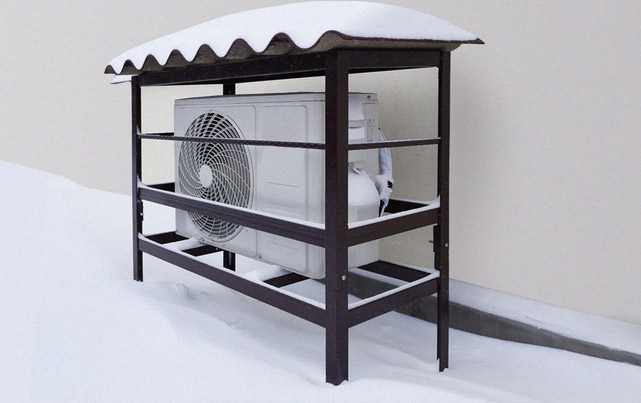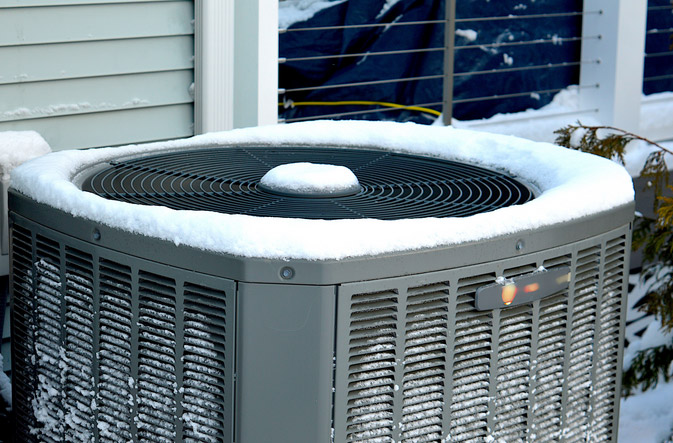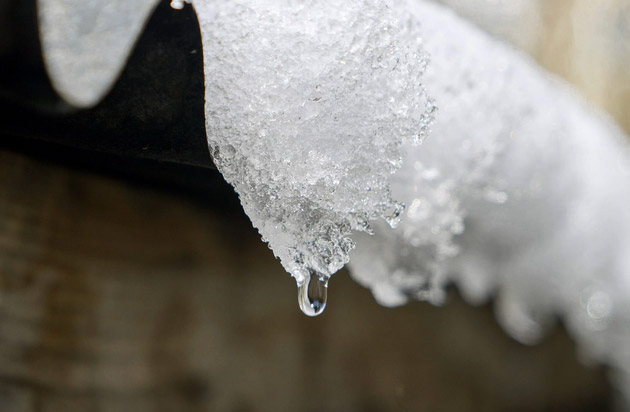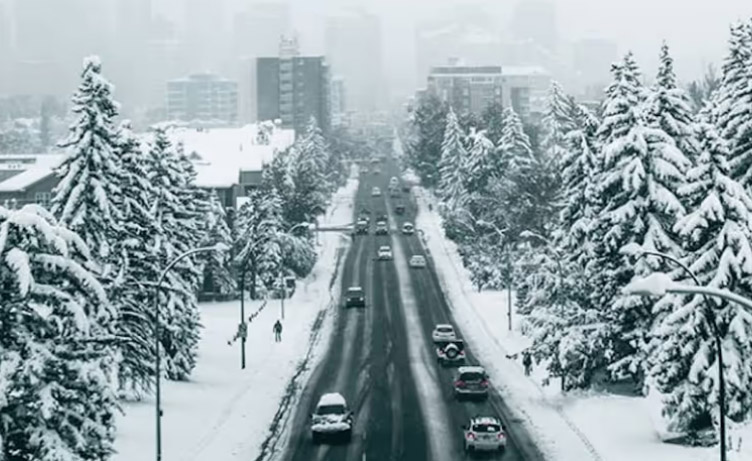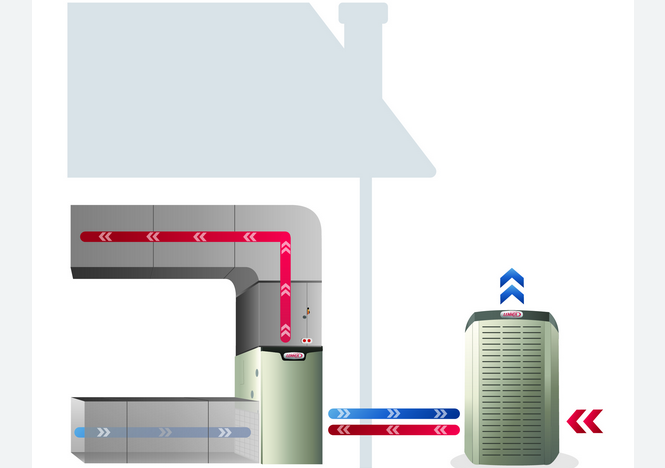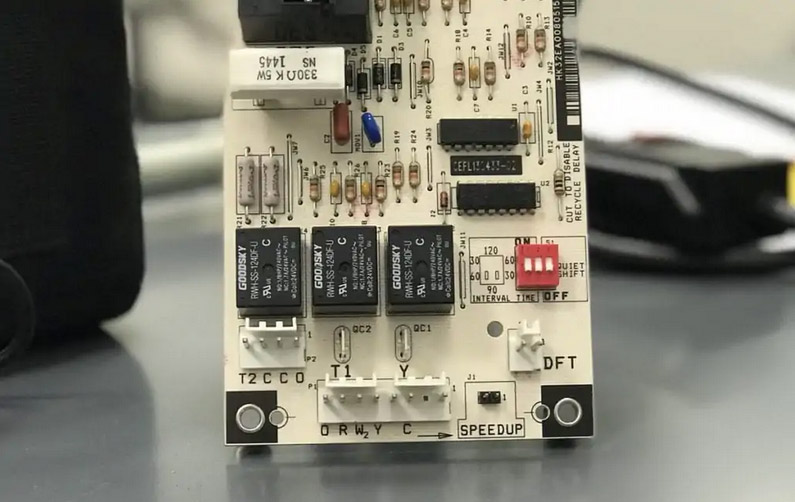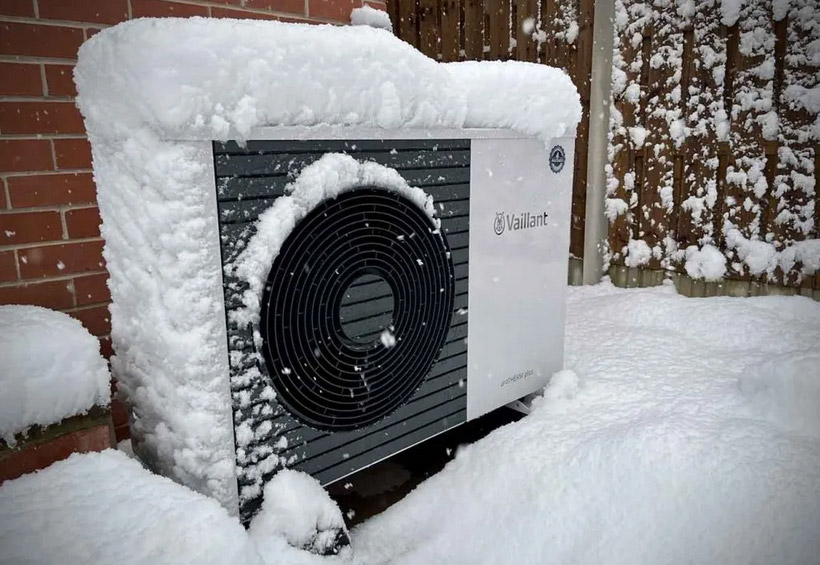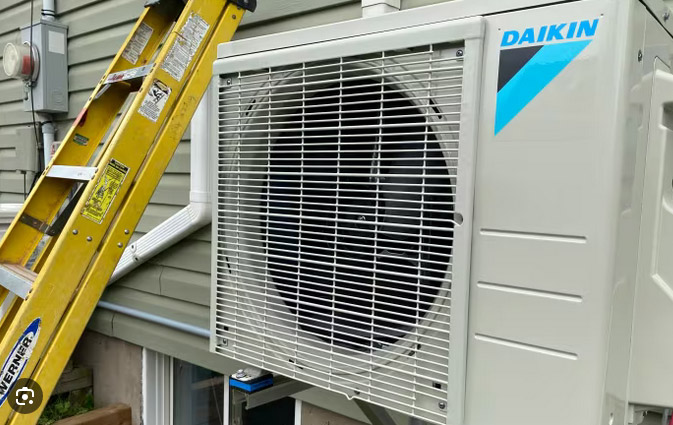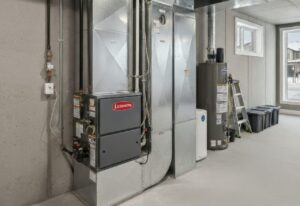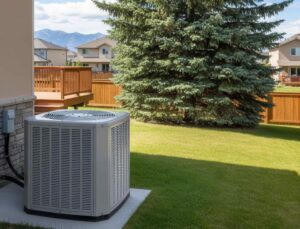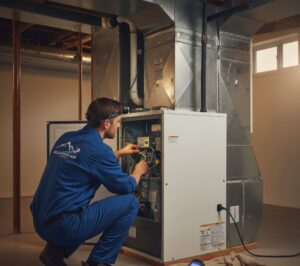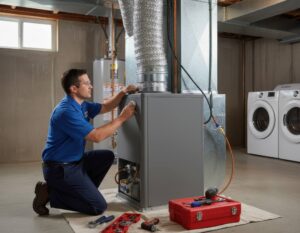The sight of any equipment in an HVAC system freezing up is alarming—especially if you also start to feel the indoor chill in winter because of it. It’s a surprisingly common problem for homeowners in Alberta, though—and, with a heat pump, there may be little to worry about if it doesn’t impact performance.
Around 7 percent of Canadian homes currently use heat pumps. Owners should know that some frost or ice on a heat pump is normal and is automatically removed during the defrosting cycle. However, heavy or prolonged ice buildup up in winter on the outdoor unit’s coils is not normal and needs troubleshooting because it can impact performance or even cause the heating to shut down.
The good news is that a simple tune-up or some basic maintenance may be all that’s required to get your heat pump back up and running efficiently again.
Let’s look at what you should do if your heat pump is freezing up in winter, why it might be happening, and how to prevent ice in your HVAC system in the future…
Why does your heat pump freeze up in winter—and what should you do about it?
If your heat pump freezes up in midwinter, the seriousness of the problem depends on what’s causing the ice buildup, the extent of the ice and how long it lasts, and whether the heat pump is the sole source of heating your home.
If you also have a back-up furnace, like many homes in Alberta, a heat pump breakdown is less critical. However, the cost of a furnace and AC installation can be too high for some homes, making a heat pump (which can both heat and cool the air) a more attractive option.
This can make any performance issues more serious. If a heat pump is the sole heating source in your home, the most likely time for it to freeze up is when the temperatures dip really low in winter and/or when the humidity is high—precisely when you need it the most.
When ice in the heat pump system is NOT an emergency
Spotting any ice on your heat pump may seem like an emergency but there may be very little wrong with it.
A temporary light frost on your heat pump is normal and should be no cause for concern if you have maintained the unit properly over the years.
When heating, refrigerant in the heat pump system turns from vapor to liquid as it comes into contact with the outdoor coil. Condensation forms on the outdoor coil and when temperatures drop below freezing point, the condensation freezes. So, frost is simply condensation from the heating process freezing to the coil.
Properly functioning heat pumps will deal with this during their built-in defrost cycle, which normally activates periodically to remove frost and ice from the coils.
When is it time to call a professional?
If the defrosting cycle is not working properly, you may notice ice building up in the system. If this ice is visible for more than four hours, you may have a defrosting problem. The heating performance can be affected by ice buildup or your heat pump can completely shut down.
This is the time to call an HVAC professional to check the system, troubleshoot, and recommend what needs to be done to fix the ice problem—especially if the heat pump has not had a tune-up in a while.
Some causes of a freezing heat pump may be pretty straightforward while others require deeper heat pump troubleshooting. Don’t be tempted to “muddle through” and hope for the best when something goes wrong because the fix may be quite simple.
How to fix a frozen heat pump?
If the frozen heat pump is not working or operating at less-than-optimal performance, firstly give it time to defrost—three or four hours if necessary. The system may be working hard to defrost itself and sometimes, this can take time.
If it’s still frozen up, you might want to try the following steps:
- Check the area around the frozen outside unit and clear snow or any debris or vegetation that might be blocking airflow and preventing effective heat transfer (this is an essential general maintenance tip for all HVAC equipment).
- Check that the gutters aren’t dripping down onto the heat pump and causing water to freeze on the unit.
- Shut off the heat pump at the breaker box or via the thermostat (this may defrost it).
- Try turning on the fan to see if that melts the ice in the system.
If that doesn’t work, call a professional HVAC technician to troubleshoot the problem, thaw the unit, and perform some general maintenance or repairs as required.
Main causes of frozen heat pump issues
If ice has formed on your heat pump’s coils for longer than four hours, it is likely due to a problem with a heat pump component or the local environment in which the unit is stored.
The problem may stem from one of the following issues that interrupt the defrost function:
- A faulty defrost sensor that doesn’t tell the system when the coil is frosted over
- Thermostat settings or problems that prevent the defrost cycle from starting
- Defrost control issues that also cause a failure of the defrosting system
- A faulty defrost relay, which will prevent the defrost system from starting
- A bad reversing valve that can cause the coil to freeze
More information about how a defrost cycle works is included below. However, there are also other possible causes of ice formation on your heat pump unit.
In particular, restricted airflow due to blocked filters, air vents or the outdoor unit is a common cause of ice formation on the coils. An outdoor fan motor that won’t turn on or spins too slowly can also reduce the airflow and lead to ice formation.
Most HVAC equipment, including furnaces and air conditioning systems, relies on uninterrupted airflow and heat pumps are no exception.
Other potential causes of freezing up can be:
- A faulty motor operating in an incorrect direction
- Low refrigerant levels can cause the coils to become too cold and freeze up (check that there is no refrigerant leak)
- A dirty outdoor coil that is covered with grass, dirt or debris
- Dripping water or snowfall can lead to an icy layer on top of the outdoor unit
Don’t attempt heat pump fixes yourself. An HVAC professional should troubleshoot and advise what to do.
Heat pumps in extreme temperatures and snow
Extremely cold temperatures may trigger defrost cycle malfunctions. Also, if a heat pump gets covered in snow and freezing rain from extreme weather conditions, this won’t help if your heat pump has existing performance issues.
Heat pumps should be installed above the snow line away from water drips and elevated off the ground. Extreme conditions, such as the very low temperatures and heavy snowfall we experience in Calgary, can prevent the heat pump from defrosting properly, meaning that the ice accumulates.
When snow falls, the defrost cycle may be completed and then, a few minutes later, be required again as the moisture in the air freezes on contact with the coils and the outdoor fan motor draws snowflakes into the coil.
Differences between heat pumps and furnaces
Before you go ahead and install a heat pump, it’s important to understand the differences between heat pumps and furnaces—especially when it comes to their capacity for heating in very low temperatures.
We advise homeowners in Calgary that a heat pump should not replace a furnace but work in tandem with it. The heat pump heats the home in milder winter conditions and the furnace kicks in when the temperature dips to -15 or -20C and below or snow or freezing rain is falling.
If you need help deciding on how to heat your Calgary home and are considering a heat pump or furnace setup, contact the friendly team at Alberta Mountain Air.
How does a heat pump work?
A heat pump is usually a split system that consists of an outdoor condenser and an indoor air handler. The system can reverse the heating and cooling processes according to the temperature, effectively doing the jobs of an AC system and a furnace.
In the summer, a heat pump works like a standard AC unit, transferring warm, humid air inside the home and transferring it outside using refrigerant to expand and cool the air in the home.
In all but a few months of the year in Calgary, however, homes need heating. A heat pump doesn’t do this by burning fuel, like a furnace. Instead, during the colder months, the heat pump simply reverses the heat transfer process. The outdoor coil acts as an evaporator, reversing the direction of the flow of the refrigerant in the system using a microprocessor and a reversing valve. The heat pump takes air from the outside, brings it indoors, and heats it using refrigerant to compress it.
“A fridge in reverse”
In winter, a heat pump is sometimes said to work like a “fridge in reverse”.
A fridge keeps food cold by using refrigerant to squeeze heat out of the air inside the fridge and transferring it outside—to the room (making the fridge feel warm or hot to the touch). Your heat pump transfers the warm air from outside to inside.
And just as a fridge/freezer can ice up, so can a heat pump. This usually happens in winter, often when the humidity is higher than normal.
Freezing can even occur when the air temperature is above freezing—like when the Chinooks are blowing. That’s because the outdoor coil on your heat pump is typically 5 to 10 degrees colder than the outdoor air. If the air temperature is 3-4C, the temperature of the coil may be -5C. If the air is also humid that day, the moisture contained in the air will condense on the surface of the coil, immediately turning to frost.
By itself, frost on the outdoor unit of your heat pump shouldn’t be too alarming as the unit usually defrosts itself. But how does this work and what happens if the defrosting mode fails?
How does a heat pump defrost system work—and what if it fails?
With a functioning unit, ice shouldn’t linger on your heat pump for more than four hours.
A heat pump’s defrost system usually has a timer that requires the compressor to run for between 30 minutes and two hours (according to factory settings) before the defrost cycle starts.
A defrost sensor attached to the system tells the defrost system that the coil is frosted over. Your system may be programmed to start the timer only after the sensor has recognized the frost or after the last defrost cycle, depending on the manufacturer.
With a functional heat pump, the defrost relay turns on the compressor, switches the reversing valve of the heat pump, turns on the interior electric heating element, and stops the fan at the outdoor coil from spinning. The outdoor evaporator turns into a condenser, raising the temperature and melting the ice.
The time it takes to melt and remove the ice varies depending on the amount of frost and the internal timing device of the system—but the automatic defrosting cycle usually takes a maximum of 10 minutes. A longer cycle may use energy unnecessarily.
If the fan motor is faulty or the defrost control board or timer doesn’t work—or the reversing valve gets stuck—the defrost mode will fail and ice can build up on your heat pump.
Can you defrost a heat pump manually?
The automatic defrost system on most new heat pumps should automatically be able to handle most freezing situations. If not, you may be able to start the defrost cycle manually but check with your HVAC professionals first.
Sometimes, if the sensor is in direct sunshine, it may not activate the defrost function for long enough to thaw the ice (though the direct sunlight may help to do that). If in doubt about this, speak to a professional to troubleshoot and potentially move the sensor.
Typical signs of HVAC problems due to freezing equipment
Ice buildup is one of the more obvious signs of a problem with HVAC equipment—and it may be no cause for alarm on a heat pump.
However, the following signs may point to a problem:
- A large amount of ice covers your heat pump unit and doesn’t defrost within four hours
- The condenser coils have heavy ice build-up
- The heat pump evaporator coil is freezing up
- Your heat pump does not effectively heat your home
- Strange noises are being emitted by the heat pump
- The heat pump unit is not pulling or releasing any air
How can you prevent a heat pump from freezing in winter?
Like with furnace maintenance, the best way to prevent a heat pump from freezing up in winter or creating other problems is to schedule regular maintenance—before the coldest weather begins.
If the main cause of the iced-up heat pump is dripping water from gutters above the unit, repair the gutters and consider relocating the unit.
It is also essential to maintain good airflow in your heat pump system by changing the air filters regularly (every 1-2 months) and keeping the outdoor unit of the heat pump free of dirt, dust, debris, and objects that may restrict airflow. Especially ensure that the fan and condenser coil are kept clear of debris to help maintain performance and efficiency, as well as prevent ice buildups.
Also, keep the air vents open to maintain good airflow through the HVAC system. Don’t close them in the mistaken belief that this will conserve energy,
Calgary homeowners should pay attention to the weather forecast when making decisions about their heating systems in winter. If very low temperatures or snow and freezing rain are expected, it may be best to change the thermostat setting to “Em-heat”, which is the emergency setting.
FAQs
Can I fix a frozen heat pump myself?
Don’t attempt heat pump repairs yourself unless you have prior experience. Never try to break off pieces of ice with a sharp tool, which can cause damage (a professional will use a special brush, blow dryer or heat gun). Beyond clearing debris and turning the fan on to try to thaw the equipment, it’s usually best to call an HVAC professional to fix a frozen heat pump.
How do I know if my frozen heat pump has a problem?
A frozen heat pump is not always a problem. Some light frost is normal. However, a build-up of thick frost or ice that doesn’t thaw out within four hours indicates a problem that will require professional troubleshooting.
Fix a frozen heat pump in Calgary
A frozen heat pump with iced-up coils or a completely frozen over unit can impact heating performance and needs professional attention. Restricted airflow or a faulty defrosting system are the most common culprits.All of our HVAC professionals are SAIT-certified and trained to service and repair any type or brand of heat pump in Calgary. Call us at 403-236-4366 or contact us online.
